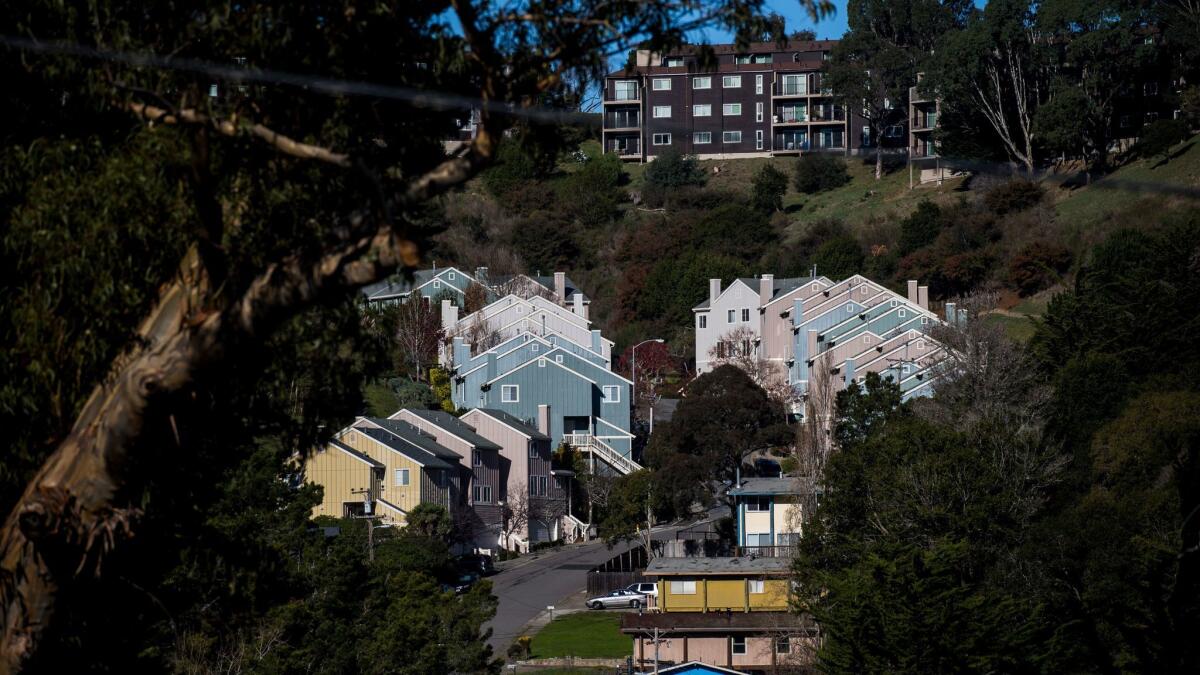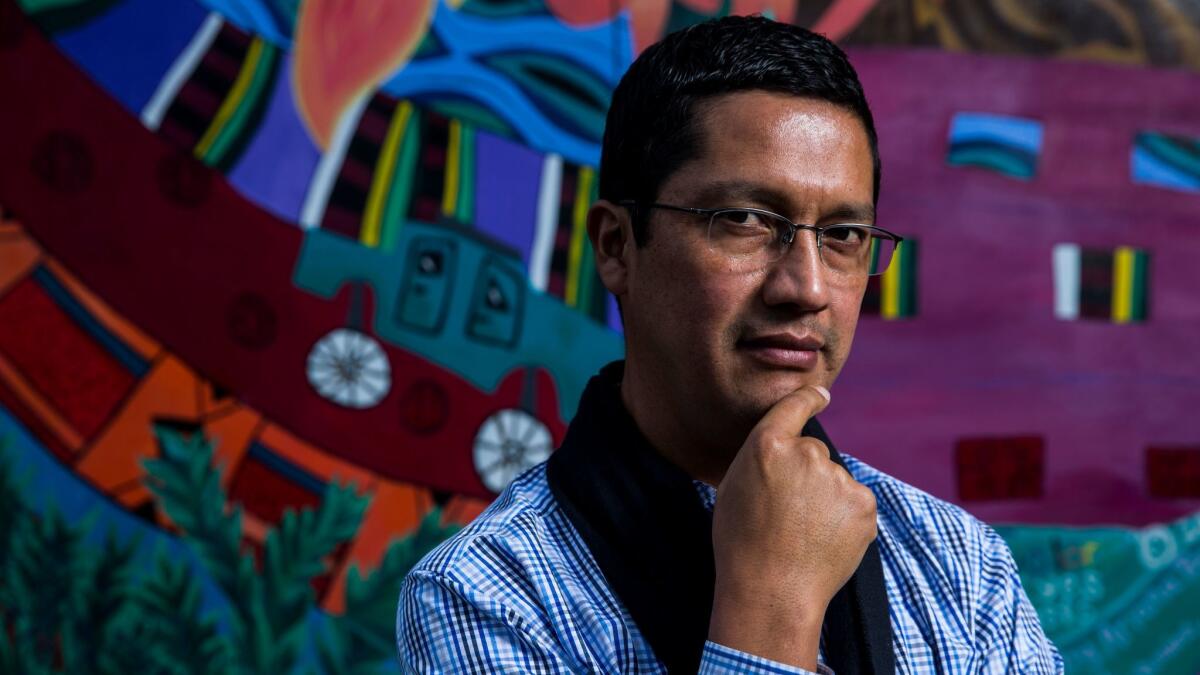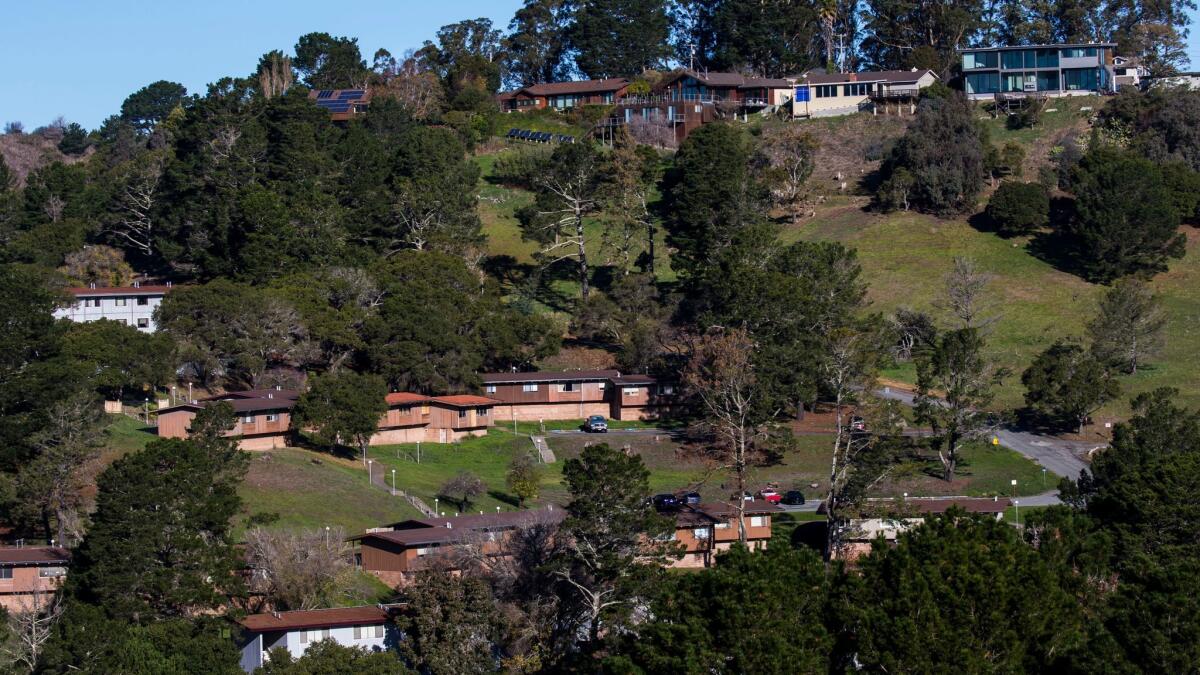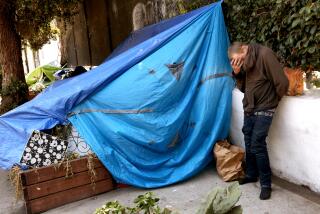Marin County has long resisted growth in the name of environmentalism. But high housing costs and segregation persist

Reporting from Marin County — The December meeting on a proposed 400-home development played out as many have in Marin County. Dozens of residents approached the microphone to argue the project would hurt their quality of life. The Board of Supervisors killed the plan and told the developer what to expect when it tried again.
“That new proposal should and will be subject to rigorous community dialogue and vetting,” Supervisor Damon Connolly said just before the vote.
Marin residents often win fights to keep the county’s landscape unspoiled by large, new construction. The county, which sits across the Golden Gate Bridge from San Francisco, is home to Point Reyes National Seashore and many other natural splendors.
But residents’ long-standing distaste for development hasn’t led just to the preservation of open spaces. In this affluent enclave of high real estate and rental costs, decades-old patterns of neighborhood segregation remain intact.
When a Los Angeles-based nonprofit examined demographic data on wealth, education, criminal justice and other issues, it found that Marin is home to the largest inequities between racial groups of any county in California. Disparities in homeownership rates and housing costs between whites and blacks and Latinos were a predominant factor leading to Marin’s ranking.
In recent years, Marin residents have blocked housing of all kinds. The 400-unit project that county supervisors rejected in December was the third in six years developers proposed on the site, where a former Baptist seminary now sits abandoned. Another stalled project would have built 224 homes for low-income seniors and families on land owned by “Star Wars” creator George Lucas. A failed effort to redevelop a run-down strip mall into 82 apartments primarily for low-income residents fueled the defeat of a county supervisor who backed it.
The battles came after the federal Department of Housing and Urban Development investigated Marin in 2009 and found that the county’s housing policies had contributed to the continued concentration of black and Latino residents in just a few neighborhoods. Following the probe, the county agreed to let federal officials oversee its housing policies. Five years later, HUD determined that Marin had started writing new rules to reverse segregation, but said results were lacking.
“The Department’s review showed that the county only developed approximately 73 affordable rental units that were made available to families with children and, unfortunately, most of these units are in areas of minority concentration,” Anné Quesada, HUD’s regional director for its Office of Fair Housing and Equal Opportunity, wrote in a December 2015 letter to the county.
Marin residents’ resistance to development exasperates low-income housing advocates, who say the opposition from locals is antithetical to their professed values. The county, while predominantly wealthy and white, is also one of California’s most liberal: Almost 80% of voters there chose Hillary Clinton in the 2016 presidential election.
“It’s one thing to talk the talk and another to walk the walk,” said Caroline Peattie, executive director of Fair Housing Advocates of Northern California. “Hillary Clinton is not going to force you to build an affordable housing development in your neighborhood. It’s very easy to go down and vote for her. You can do that and not be touched by your vote in Marin County.”

Some of Marin’s housing problems can be traced to the 1940s, a time when development in the county was booming. As it did in other communities across the country, the federal government guaranteed bank loans to developers of white-only subdivisions in Marin, promoted the use of racially restrictive covenants on deeds to prevent people of color from buying homes and subsidized white residents’ mortgages but not others, according to a recent report by county officials on housing disparities.
Congress outlawed housing segregation in the late 1960s, a national effort that coincided with a push by Marin activists to restrain growth in the name of an ascendant environmental movement. The county blocked new highway construction, curbed connections to water sources and limited home building on large plots of land.
Now, almost 85% of the county is off limits to development. At the same time, affordable housing in Marin County is all but unavailable and racial disparities and segregation continue.
The county’s median home value is $1.1 million — a record high. Marin’s monthly median rental price of $4,323 is the nation’s highest, according to real estate website Zillow. Every eight years, the state sets targets for new home production to keep pace with projected population growth. Marin consistently ranks at or near the bottom among Bay Area counties in meeting those goals.
After paying rent, Marin’s white households take home nearly $60,000 a year, an amount more than three and a half times that earned by Latino families in the county, according to the Advancement Project, the nonprofit that examined racial inequities in the state. Whites were also 40% more likely to own homes in Marin than blacks and Latinos, the study found.
In Marin City, an unincorporated neighborhood in southern Marin County, the effects of discriminatory federal housing policies remain stark.
During World War II, Marin City was home to the nation’s first integrated federal housing project where workers in nearby shipyards and their families lived. But after the war, white residents, buoyed by government subsidies, bought homes throughout Marin County while black residents were often prohibited from doing so.
Today, Marin City is physically, economically and racially divided from the rest of the county. U.S. Highway 101 separates it from well-heeled Sausalito, a city just a mile away. Marin City’s median household income of $40,000 is less than half the countywide median. Blacks make up less than 4% of Marin County’s population, but almost 40% of Marin City’s.
Marin County officials say they’ve encouraged home building in segregated neighborhoods, but agree with HUD that they could do more. To remedy affordability problems and racial inequities, the county is designing policies, such as dedicating more funding toward low-income housing in predominantly white areas and holding some public growth planning meetings in the evenings to encourage broader participation. County officials have been working on a plan for almost 18 months and expect to receive approval from the board this year.
“The county needs to acknowledge our racially segregating and discriminating policies today and historically,” said Liz Darby, Marin County’s social equity policy coordinator.
But residents could resist that effort when it comes time to approve projects.
Lucas owns a 4,700-acre ranch in Marin, has built some studio space there and has long wanted to develop more of it, including proposing low-income housing. But pushback from neighbors blocked the attempts, including a 2015 effort to build a mix of single-family homes and apartments for low-income seniors and families, said Mary Stompe, executive director of PEP Housing, the affordable housing developer partnering with Lucas. Stompe now fears Lucas is going to abandon the project. A Lucas spokesman couldn’t be reached for comment.
“It would have been such an incredible benefit to the community,” Stompe said. “You have somebody who was willing to pay for the entire project. That never happens.”
Because of community opposition, Stompe said, Marin has a reputation among developers as the hardest county in California in which to build low-income housing.

Marin residents cite traffic congestion, especially along U.S. Highway 101, the need for parking and the county’s small-town feel among other factors when arguing against new development.
Racial issues have also become part of the conversation. A proposal to redevelop a blighted Marinwood shopping center into 82 apartments primarily for low-income residents prompted a raucous community meeting about affordable housing in 2013 led by then-county Supervisor Susan Adams.
There Melissa Bradley, a prominent Marin County real estate agent, charged Adams with having “volunteered us for the ghetto.” Stephen Nestel, a local blogger opposed to the project, said that it could increase crime, illustrating his argument with a photo of an MS-13 gang member in El Salvador handcuffed with tattoos covering his back. Adams later fought off a recall attempt but lost her seat in the next scheduled election, where housing issues were a dominant concern.
Marin’s low-income housing advocates contend that when county residents don’t allow affordable housing, they’re endorsing existing inequities.
“They say they want to maintain the roots and characteristics of our county,” said Omar Carrera, executive director of the nonprofit Canal Alliance. “But what they really are saying is that they want to maintain it as white and wealthy.”
Twitter: @dillonliam
ALSO
Affluent Marin County can continue to limit home building under bill signed by Gov. Jerry Brown
What housing crisis? Last-minute bill would let wealthy Marin County limit home building
Affordable housing is again a red flag in ‘green’ Marin County
Updates on California politics
More to Read
Get the L.A. Times Politics newsletter
Deeply reported insights into legislation, politics and policy from Sacramento, Washington and beyond. In your inbox three times per week.
You may occasionally receive promotional content from the Los Angeles Times.











